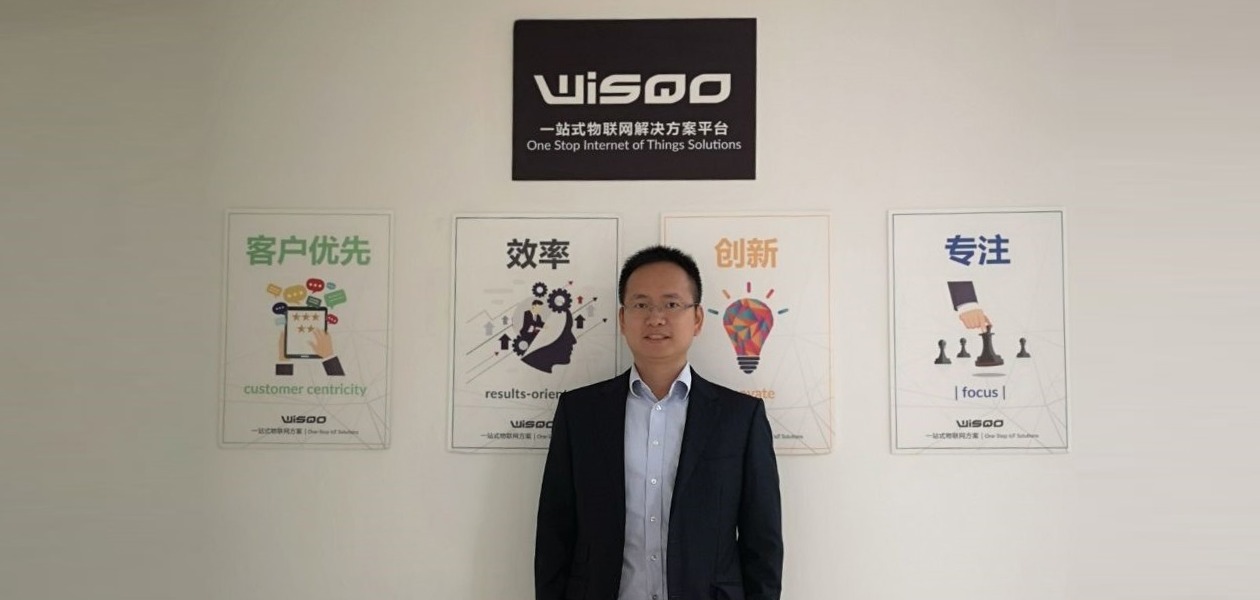Kickstarting digitalisation with open innovation
Open innovation has helped IoT solutions provider WisQo to develop new products that address market needs, says founder Yang Wenxin.
Connectivity has expanded beyond smartphones and computers to everyday objects like streetlights and door locks. The global market for the Internet-of-Things (IoT) technology is projected to grow to over US$3 trillion annually by 2026, while the number of connected things in the world is estimated to reach 20 billion by the year 2020.
As the influx of smart devices continues, many companies are trying to enter the IoT market by looking for solutions that digitalise their products. However, it can be difficult to find an IoT-solutions partner that can cater to a company’s present and future needs.
WisQo resolves these problems by acting as a one-stop IoT solutions provider. Founded in 2014 by Yang Wenxin, WisQo aims to co-create smart products and help companies realise their potential with digitalisation. To do so, WisQo provides a wide range of services—from hardware to software—including the setup of cloud servers as a foundation for operations to expand in the future.
A partner with local telecommunication companies like SingTel and HiLife, WisQo also has global connections, having worked with clients from both the US and China, where its technologies are exported for industrial IoT applications. In this interview with IPI, Yang shares his thoughts on open innovation and how it can help to improve business.
1. What is the core competency of your company?
WisQo’s core competency lies in a wide range of ultralow-power electronics, cloud platforms and front-end software applications. Since 2018, we have been focused on producing smart façade lighting systems and smart industrial monitoring systems as well.
2. Was there a turning point in WisQo’s history that convinced you that open innovation was the right way to grow?
In the beginning, we used to develop IoT solutions based on our own market knowledge. However, we began to realise that other more mature companies in the industry may understand the market demands better; knowledge which we value and respect.
By partnering with these industry players—and thereby engaging in open innovation—we were able to gain insight into how to solve market problems with our technologies. In addition, our open innovation partners helped to provide their expertise, which supported our R&D and commercialisation process.
3. How has open innovation benefited your company thus far?
Without open innovation, a young start-up like us would not have been able to kick-start our business. The knowledge and experience that our industry partners provided were critical in directing our limited resources and time into solving key problems during product development.
For example, the new smart façade lighting that we are launching by end-2019 is the result of open innovation. During the product’s development, our industry partners helped us to understand many of the problems that users face. These users could range from developers who may find conventional products too costly or troublesome to maintain; to architects who might find the material library too limiting for their designs.
4. How do you encourage a culture of open innovation in your company?
WisQo has a strategic team that includes one key individual from each department. The team ensures that WisQo’s latest products address the market needs to maintain our lead in the industry. For example, in 2017, our strategic team was involved in assessing the opportunities of the smart façade lighting system before the company chose to invest in the project.
5. What are some lessons that you have learnt in the process of engaging in open innovation?
The process of innovation is slow and costly. Finding the right industrial partner to participate in open innovation can greatly expedite the innovation process, saving both time and effort. The right partner should be able to advise on potential pitfalls that your company may face, which can help to channel R&D and production efforts in the right direction, helping the company become more efficient.

